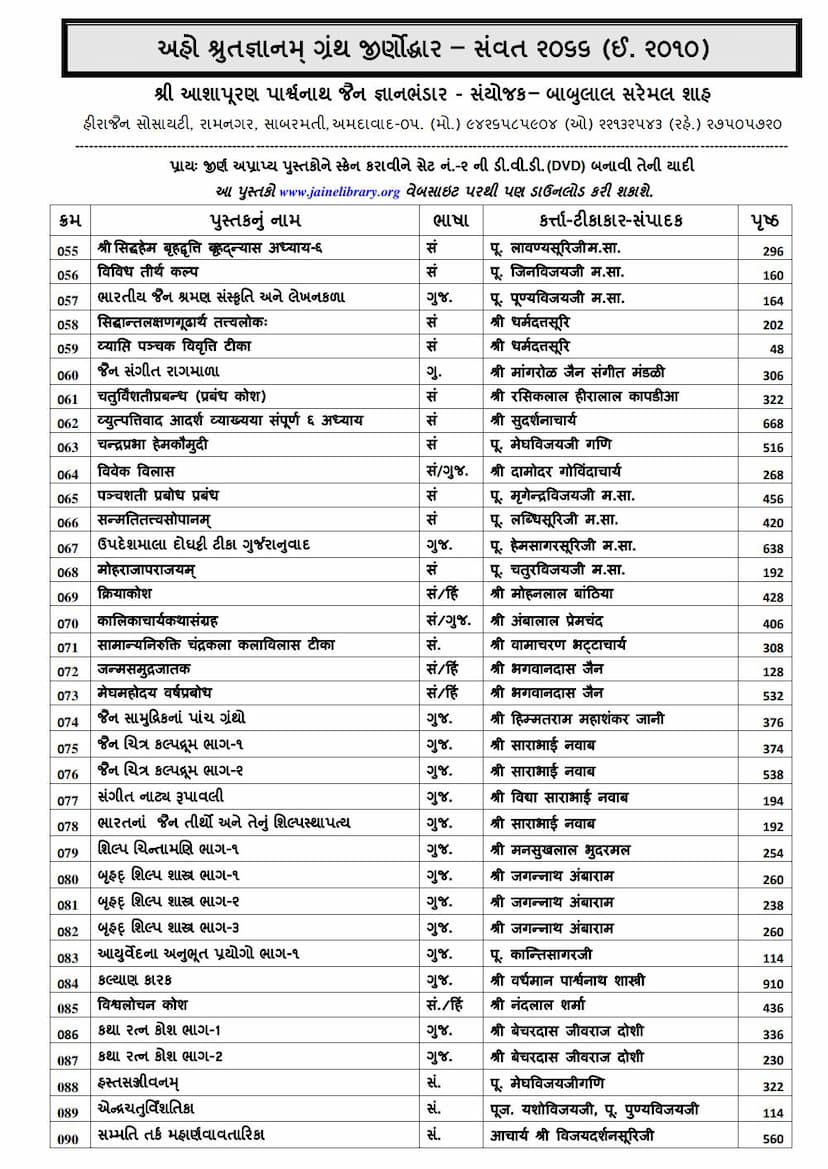Sammatitattvasopanam
Added to library: September 2, 2025

Summary
Here is a comprehensive summary of the Jain text "Sammatitattvasopanam" by Labdhisuri, based on the provided information:
Book Title: Sammatitattvasopanam Author: Labdhisuri Publisher: Labdhisuriji Jain Granthamala Chhani Publication Year (Vikram Samvat): 2002 (corresponding to 1946 CE) Catalog Link: https://jainqq.org/explore/009526/1
Overall Purpose and Context:
"Sammatitattvasopanam" is a compilation by Acharya Shrimad Vijay Labdhisurishwarji Maharaj, dedicated to clarifying and presenting the principles of Jain philosophy. The text is specifically a compilation based on the "Tattvabodhinī" commentary by Tarka-panchanan Shrimad Abhaydev Suriji on the "Sammatitarka Prakarana" by Tarkashíromani Shrimad Siddhasen Divakar. The primary aim of this compilation is to make the complex philosophical arguments of the Sammatitarka more accessible to students and scholars, particularly by presenting them in a question-and-answer format, resolving textual discrepancies, and clarifying intricate logical points.
Key Themes and Content:
The book is a detailed exposition of Jain logic and metaphysics, primarily focusing on the refutation of non-Jain philosophical viewpoints and the establishment of the validity and comprehensiveness of Jain teachings (Anekantavada and Syadvada). The compilation is structured to facilitate understanding, moving from establishing the foundational principles of Jainism to addressing specific logical and philosophical debates.
Key Aspects of the Compilation:
-
Source Material: The work is based on the seminal Jain text "Sammatitarka Prakarana" and its esteemed commentary "Tattvabodhinī." This indicates a deep engagement with core Jain philosophical and logical traditions.
-
Structure and Presentation:
- Question-Answer Format: A significant feature of the compilation is its effort to present arguments in a question-and-answer (Pūrvapaksha-Uttarapaksha) style. This method addresses potential difficulties faced by students in grasping the original text, where a continuous exposition of counter-arguments is followed by a continuous presentation of replies. By presenting points and counter-points side-by-side, the compilation aims to make the learning process more engaging and efficient.
- Clarity and Accessibility: The compiler, Labdhisuriji, aimed to simplify and clarify the text, especially parts that were found to be inaccurate or difficult due to the extensive nature of Abhaydev Suri's commentary. This includes correcting errors and providing necessary connections to ensure the flow of ideas.
- Sanskrit Chāyā: The text includes Sanskrit explanations (Chāyā) for the Prakrit verses, making it accessible to those familiar with Sanskrit, further aiding in understanding the nuances of the original text.
-
Philosophical Depth: The book delves into various critical philosophical topics, including:
- The nature of valid knowledge (Pramana): Discussing different theories of knowledge and establishing the validity of Jain pramāṇas.
- The concept of 'Anekānta' (Non-absolutism): The core Jain principle of manifold perspectives is central to the work, aiming to demonstrate its superiority over one-sided or absolute views.
- Refutation of opposing views: The text engages in detailed refutations of various non-Jain philosophical systems (e.g., Buddhist, Nyaya, Sankhya, Mimamsa, Charvaka) on topics like the nature of reality, the self (Ātmā), causality, permanence vs. change, the existence of God, and the afterlife.
- The importance of the Jina's teachings: Establishing the authority and validity of the teachings of the Tirthankaras (Jinas) as the ultimate source of correct knowledge.
- Nayas (Standpoints): Explaining and differentiating various epistemological and metaphysical standpoints (e.g., Dravya-naya, Paryaya-naya, Nigama, Samgraha, Vyavahara, Rju-sūtra, Shabda, Samabhirūḍha, Evam-bhūta) and demonstrating how they contribute to a complete understanding of reality.
- The nature of reality: Discussing concepts like substance (Dravya), attributes (Guna), and modes (Paryaya), and how they are understood within the Jain framework.
- Theology: Critiquing the concept of an eternal, omnipotent creator God (Ishvara) from a Jain perspective.
- Epistemology and Logic: Detailed analysis of the conditions for valid knowledge, the nature of perception (Pratyaksha), inference (Anumana), and other means of knowledge, along with detailed logical arguments and refutations.
- The concept of 'Anekānta' in practice: The text emphasizes that understanding reality requires considering multiple perspectives (Nayas) and that rigid adherence to a single viewpoint leads to error (Mithya-darshana).
-
Author's Contribution: Acharya Labdhisuriji's contribution lies in his meticulous compilation and clarification of the complex arguments presented in the Tattvabodhinī. His aim was to make this profound philosophical work accessible, thereby promoting the study and understanding of Jain philosophy.
Significance:
"Sammatitattvasopanam" is a valuable resource for understanding the logical rigor and depth of Jain philosophy. It serves as a bridge between the original, often challenging, scriptures and the aspiring student of Jainism, offering a structured and reasoned approach to profound metaphysical and epistemological questions. The compilation reflects a commitment to preserving and propagating the teachings of eminent Jain Acharyas like Siddhasen Divakar and Abhaydev Suri.